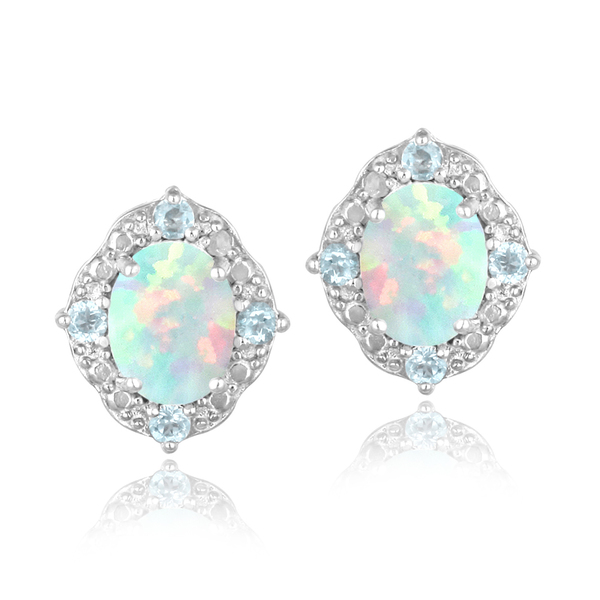
Opal has long been regarded as an October birthstone, sharing the spotlight with tourmaline. The most treasured variety of opal is black opal with brilliant flashes of different colors. Black opal is so called because of its dark background color. The variety known as white opal has a light background, and the colors displayed lean toward the pastel hues. Crystal opal has a colorless background and exhibits play of color, but unlike white or black opal, it lets light pass through it. Fire opal is also fairly transparent, but its background color may be yellow, orange, red or brown. Sometimes it doesn’t even have the typical play of color. Fire opal with a red body color is also known as cherry opal. Opal that is colorless, transparent to semitransparent and has little or no play of color is called jelly or water opal. Opal quality is judged by the number of colors exhibited and the evenness of the pattern.
Opals are usually found in sandstone or clay stone. Deposits are spread over a wide area, and there is little clue to their location. Mining is done on a small scale with hand-operated machinery and small tools. A pocket knife might be the final instrument to loosen an opal from its host rock.
Synthetic opal first came on the market in 1974 and has been improving ever since. A skilled gemologist can distinguish it from natural opal by viewing it under magnification, but to the untrained eye it looks natural.
Since subtle differences in quality can make large differences in beauty (and price), it is important to select your jewelry from a professional who can guide you honestly and ethically in your purchase.
Many gems are processed to enhance their natural beauty. Ask your Certified Jeweler to discuss which techniques might apply to the gem of your choice.
